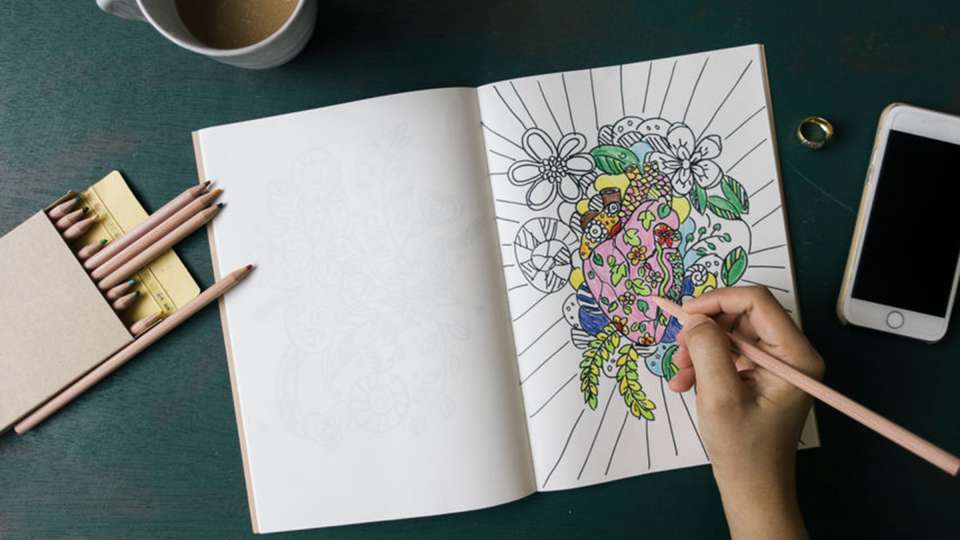
You’ve seen them everywhere: coloring books for grown-ups. In the past few years, the adult coloring trend has exploded, with books coming in more varieties and with more detailed patterns than anything you scribbled in as a kid. (We’re not joking. For those with a wryer sense of humor, there are even swear word coloring books.)
Coloring book covers often make claims that coloring reduces stress and improves mindfulness, but is that true? Is coloring good for mental health, or is it just a fun hobby?
Coloring for mental health
Coloring is one of many creative projects that Chrystal Williams, C.T.R.S./R., a nationally certified recreation therapist, uses with patients at Harborview Medical Center’s inpatient psychiatry unit. She says her patients tell her coloring takes their minds off their fears and the stressors in their lives.
Though there still isn’t a lot of research on the health benefits of coloring, several small studies have shown that coloring can reduce stress as well as anxiety and depression.
Coloring by yourself is not the same as therapist-led art projects, however, and while it may boost your mood and relax you, research suggests it’s not a replacement for therapist-led art projects if you’re dealing with more serious problems.
Coloring isn’t necessarily better for your mental health than any other creative activity, but it may be easier for people who aren’t used to being artistic.
“If someone sees a blank sheet of paper, they may say they aren’t creative, but if there’s structure, there’s more of an opportunity for them to feel satisfied with the outcome,” Williams says.
Coloring as mindfulness
Is coloring a mindful activity? It can be, Williams says, if you’re focused on making it so. It can also just be a fun hobby you do while you watch TV or ride in the car, like the way some people knit while doing other things.
“It really depends on what you’re wanting to get from it,” Williams says.
If you want to use coloring as a type of mindfulness practice, hone in on the details of the activity while you’re doing it. What does the crayon or pencil feel like as it scratches against the page? How do the colors you’re using complement each other?
“Don’t feel guilty about doing a leisure activity, especially if it’s something you want to do,” Williams says. “It’s beneficial in the end.”
Tips for keeping up with coloring
Here are some of Williams’ ideas for how to get into coloring, even if you’re busy all the time or don’t feel particularly artistic.
Do it in parts. Remember that you don’t have to finish the coloring page in one sitting. You can spend as much or as little time as you want, then come back to it later.
Put it somewhere visible. If your books and pencils are stuffed in a drawer somewhere, it’s easy to forget to bring them out. Instead, put them on the table where they will be a visual reminder to take a little me time.
Take a few minutes. If you feel like you’re too busy to color for an hour, no worries — try a few minutes at a time instead. Even 10 minutes of focused coloring can help you feel a little better if you’re stressed out or can make you feel proud that you took a little time for yourself to do something you enjoy.
Enlist a buddy. Coloring sessions with friends are totally a thing, right? If not, make them one. The next time a friend is over, ask if they want to color with you for a little bit. Bring out the coloring books when you and your significant other are bingeing that new Netflix show, or make it a fun after-dinner activity with the kids. Either way, it helps to have someone who will make sure you stick to your relaxation goals.
Create your own coloring page. If you don’t want to spend money on fancy coloring books, you can create your own simple illustrations to color in. To do this, draw a basic shape or trace an object (even your hand!) and then create freehand swirls and smaller shapes within it. You can then color in the pockets you created.

 Healthy ideas for your inbox
Healthy ideas for your inbox





